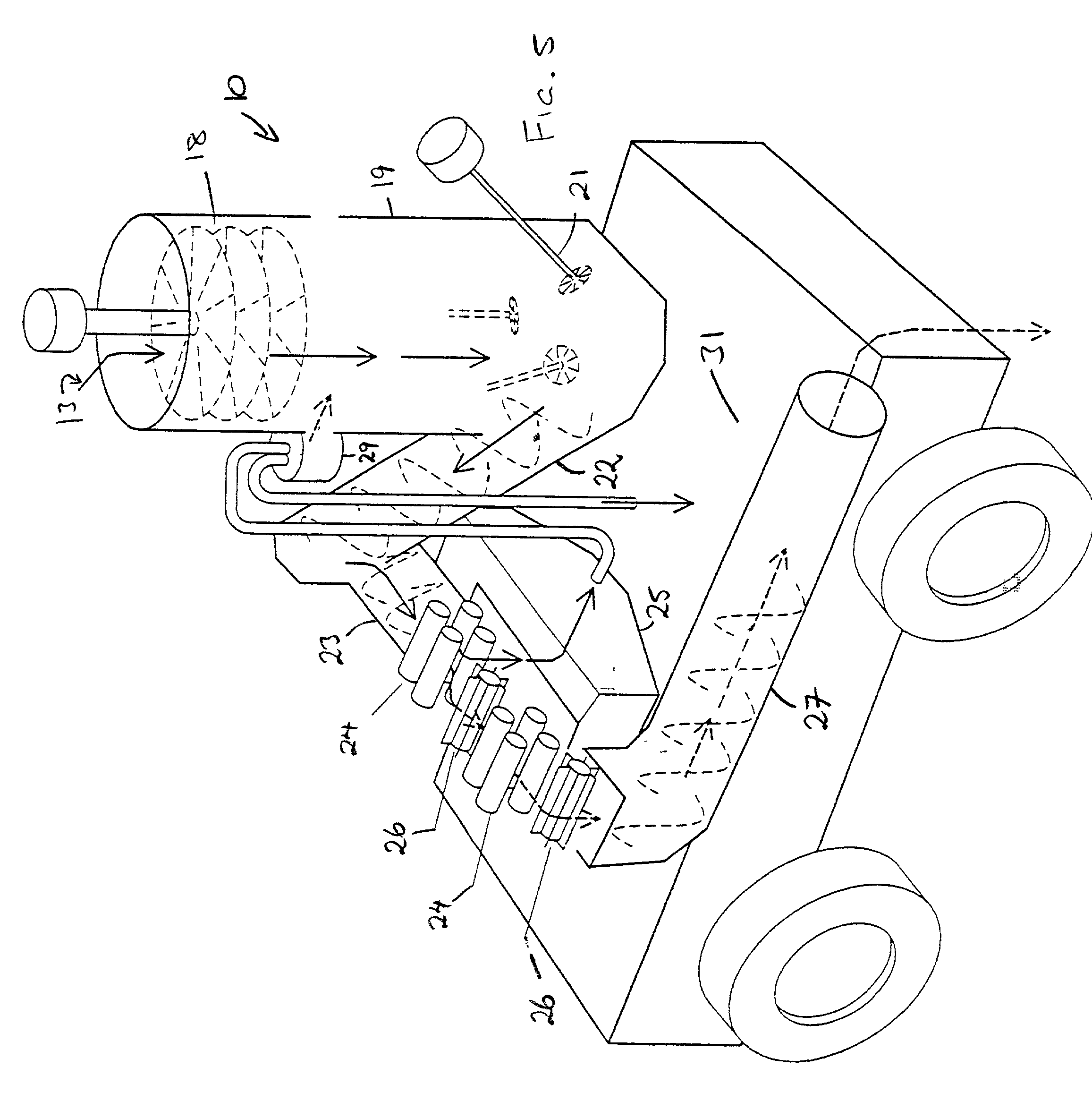In-field sugar cane processor
a technology of sugar cane and processing equipment, applied in the field of sugar cane processing equipment, can solve the problems of increasing the financial return of producers, removing a lot, and opposing the concept of centralised milling equipment for milling processes
- Summary
- Abstract
- Description
- Claims
- Application Information
AI Technical Summary
Benefits of technology
Problems solved by technology
Method used
Image
Examples
Embodiment Construction
[0045] In the description of the processor and its use provided below, only the main processor components have been described. Standard engineering applications, such as for example, machine body, drive trains, hydraulics, electrics, pumping systems, feed systems, controls, control circuits, piping, and the like have not been detailed as it is the process and the general design of the apparatus that can comply with the objectives of the invention that is critical.
[0046] In the depicted embodiment, the processor 10 is depicted as being interconnected to and towed through a coupling 17 at the rear of a known type of cane harvester 11. Such a harvester 11 normally includes a base cutter that severs the cane 12 proximate the ground. The severed cane 12 is then fed through the harvester 11 along feedpath 13 past chopper drums or the like which chop the cane 12 into billets that are then fed through an inlet 16 into the processor 10. Any waste plant refuse that is not to be processed with...
PUM
| Property | Measurement | Unit |
|---|---|---|
| chemical | aaaaa | aaaaa |
| distances | aaaaa | aaaaa |
| distance | aaaaa | aaaaa |
Abstract
Description
Claims
Application Information
 Login to View More
Login to View More - R&D
- Intellectual Property
- Life Sciences
- Materials
- Tech Scout
- Unparalleled Data Quality
- Higher Quality Content
- 60% Fewer Hallucinations
Browse by: Latest US Patents, China's latest patents, Technical Efficacy Thesaurus, Application Domain, Technology Topic, Popular Technical Reports.
© 2025 PatSnap. All rights reserved.Legal|Privacy policy|Modern Slavery Act Transparency Statement|Sitemap|About US| Contact US: help@patsnap.com



